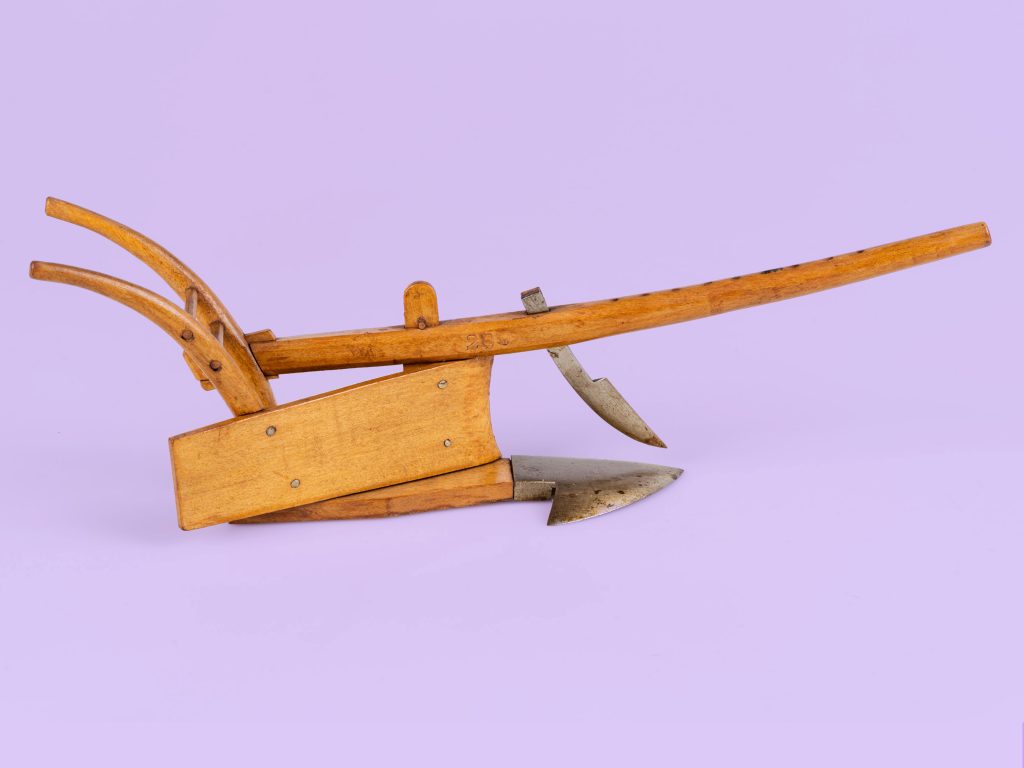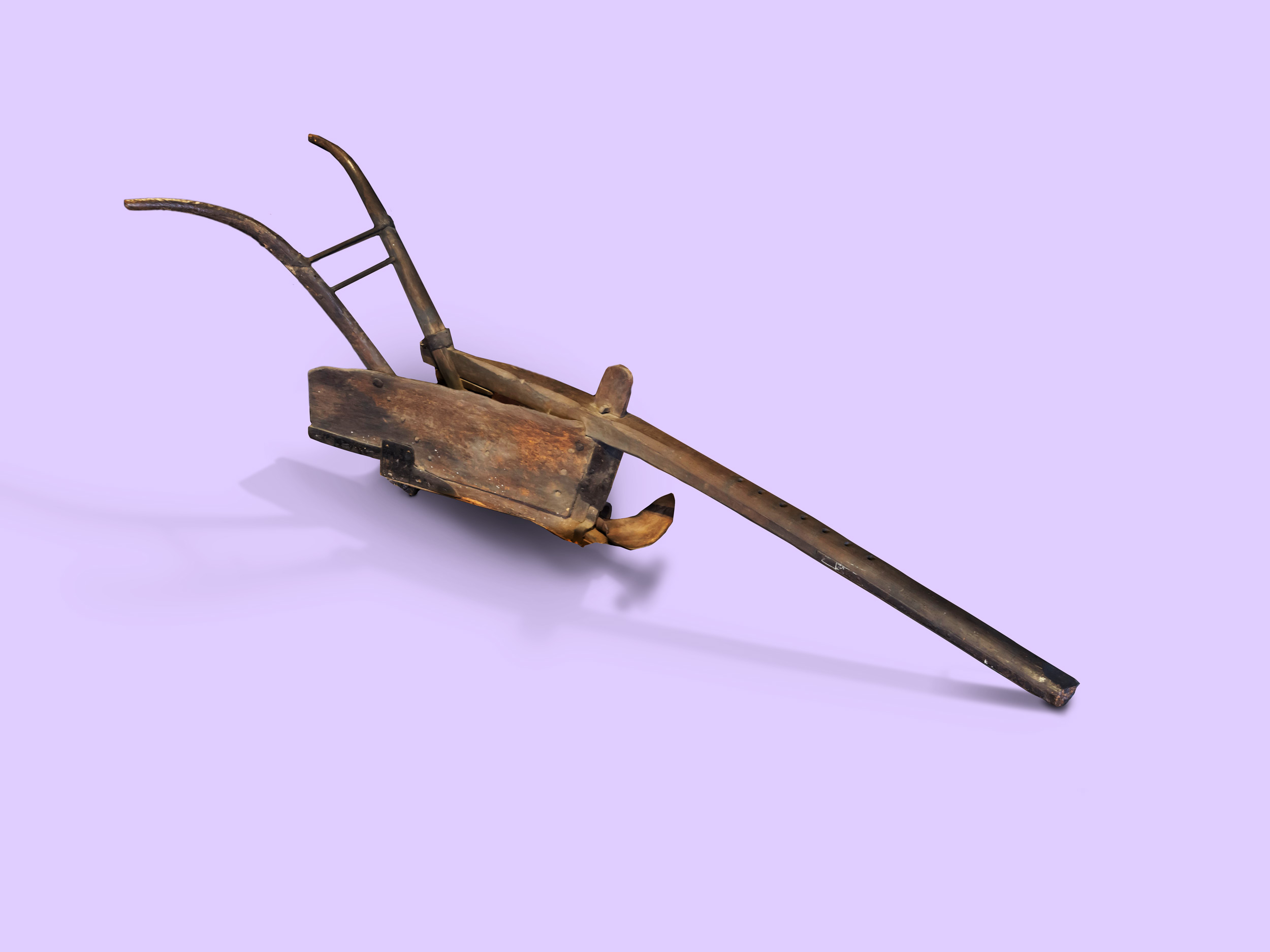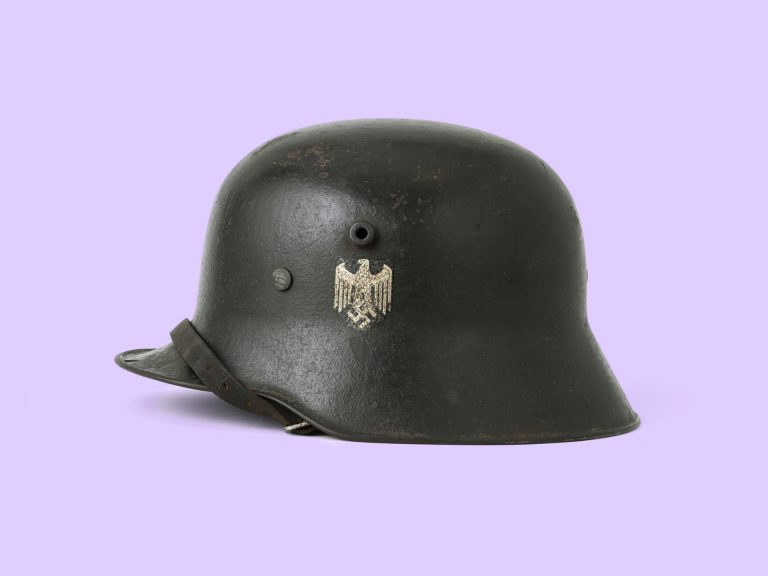Thousands of years of tilling the soil: the plough
Farmers have used ploughs to till the land since ancient times. Indeed, the ploughs depicted in the medieval Sachsenspiegel, the oldest German legal code, vary only in minor details from those used in the 18th century. Wheeled ploughs first cut open the soil with a blade and then turned it with a mouldboard. The majority of ploughs were made of wood until the 20th century, as iron was too expensive.
One plough even became an object of veneration. In 1769, the coach carrying the Holy Roman Emperor Joseph II (1741-1790) broke down. Whilst it was being repaired, the emperor spied a farmer ploughing his land and offered to give him a hand. Locals venerated the plough that Joseph had guided as a holy relic, and it was later put on display at the World Exhibition of 1873. A copy of the “holy plough” on display at the Vienna Museum of Science and Technology is almost identical to the plough on display in the Deutschlandmuseum.
Another enlightened despot, Frederick the Great (1712-1786) was keenly aware of the importance of agriculture and ensured that every new territory that he conquered was put to the plough, just after he had put its armies to the sword. It is said that he regularly made expensively-trained cavalry horses available for use as draught animals. He is also known as the “Potato King”, for the edicts he issued to ensure that the potato, a hardy root vegetable, became a staple in his realm in order to prevent famine.

The history and design of the Old German plough
The plough on display in the Deutschlandmuseum is a classic bed plough, also generally known as an Old German plough. With characteristic splayed guide handles, it would originally been equipped with a wheel frame connected to the long plough beam via plug holes. However, as it was removable, this component is often missing on surviving models.
The cylindrical mouldboard is made of wood, to which an iron share with a sharp point is also attached. Unfortunately, the knife blade, which would have been located on the plough beam, has been lost.
This example probably comes from a country estate belonging to the Bismarck family. This old noble lineage is best known as the family of German Chancellor Otto von Bismarck (1815-1898), but also played an important role in the 18th century under Frederick II. Levin-Friedrich von Bismarck (1703-1774) served as Prussian Minister of Justice and August Wilhelm von Bismarck (1750-1783) was Prussian Minister of Finance.
Historical wooden tools of this age are rarely preserved in good condition. With its connection to an important Prussian noble family, this artefact is a truly special item.
Property information
Designation
- Date 18th century
- Gallery The Enlightenment
- Category Technology
- Origin Germany
- Dimensions 76 x 76 x 275 cm (WxHxD)
- Material metal, wood
Property information
Designation
- Datierung 18th century
- Epochenraum The Enlightenment
- Kategorie Technology
- Herkunft Germany
- Dimensionen 76 x 76 x 275 cm (WxHxD)
- Material metal, wood

About the Deutschlandmuseum
An immersive and innovative experience museum about 2000 years of German history
Reading tips and links
Lifesaver? The German Steel Helmet in the First World War
German Tank Museum Munster
Lifesaver? The German Steel Helmet in the First World War
German Tank Museum Munster
Share article
Other objects in this collection
Discover history

Visit the unique Deutschlandmuseum and experience immersive history
2000 Jahre
12 Epochen
1 Stunde




